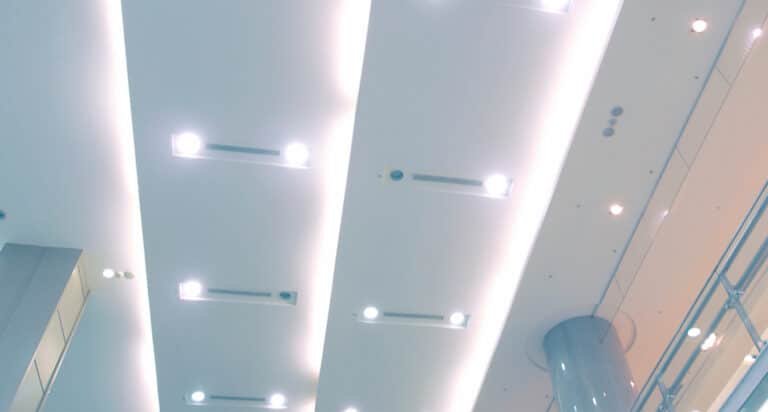What is CRI, and how does it impact your lighting? Read on to find out how it can put your space in a better light.
So, you’re buying light bulbs or specifying the lighting for a new home, and this term keeps popping up… CRI. What exactly is it, and why is it so important anyway? CRI stands for Color Rendering Index, and you cannot overstate how vital CRI can be on the overall look of a space.
Have you ever walked through the paint department of your local hardware store and noticed how they have a small booth, or demo area, with different light sources for you to hold paint swatches under? Well, that’s to demonstrate CRI. Every artificial light source does a different job of accurately showing the colors around it. We had it pretty good in the days of incandescent light bulbs, which have a CRI of 100, a perfect score!
The Downside of Modern Incandescent Bulbs
However, large energy consumption and short life spans have rendered incandescent bulbs dinosaurs, and their days are definitely numbered. For a long time, this left us in the unhealthy and unattractive world of low-CRI. If you’ve ever walked through an older parking garage at night, you’ve seen the yellowish coloring rendering of high-pressure sodium lighting, which has a lowly CRI of around 25. Parking lots can do better with blueish metal halide bulbs, usually with a CRI of around 60. In recent years, the CRI of fluorescent tubes has gotten much better, well into the 80s.
Conclusion
With modern LED technology, most homeowners can find good quality LED bulbs with a CRI of 90+. At Paratus, we always recommend high CRI, quality bulbs that will bring out your finishes, artwork, and decor and let you see your home in the way it was always meant to be seen.
Paratus provides effective fluorescent to LED upgrades for commercial businesses. Contact us to learn how you can make the switch.



